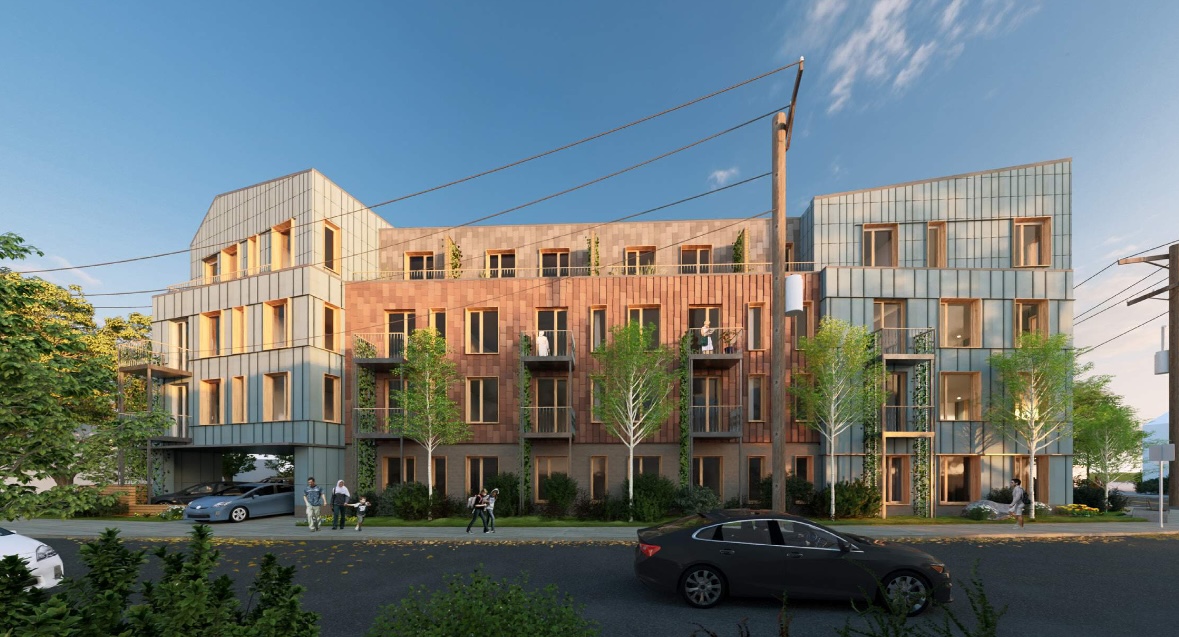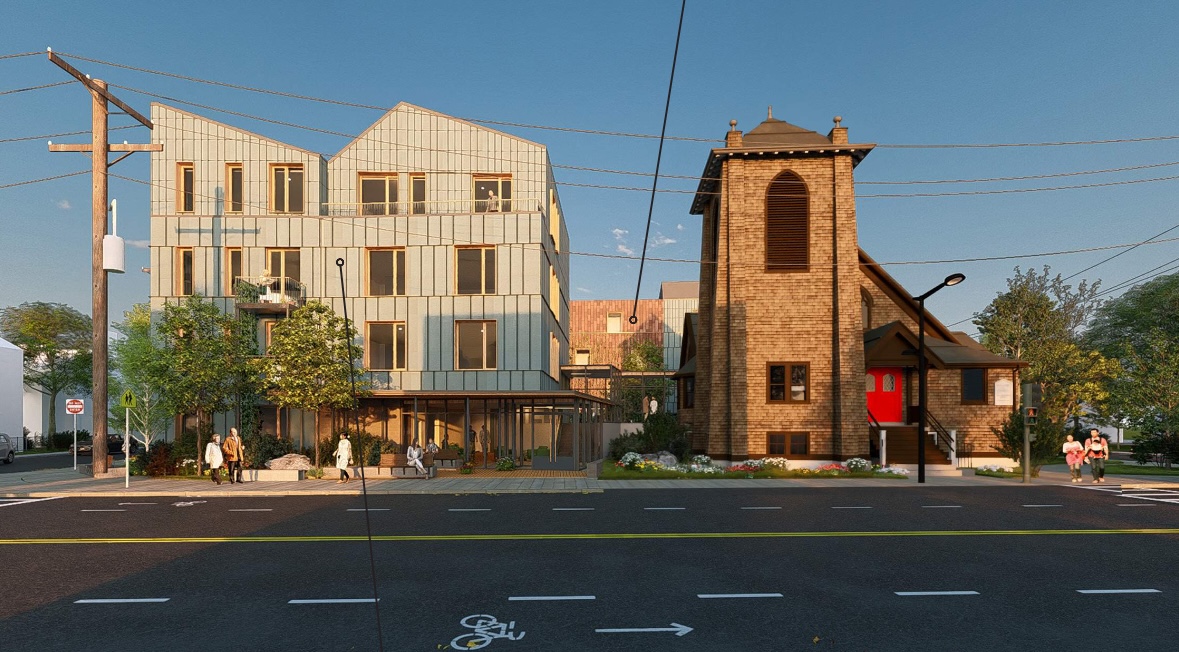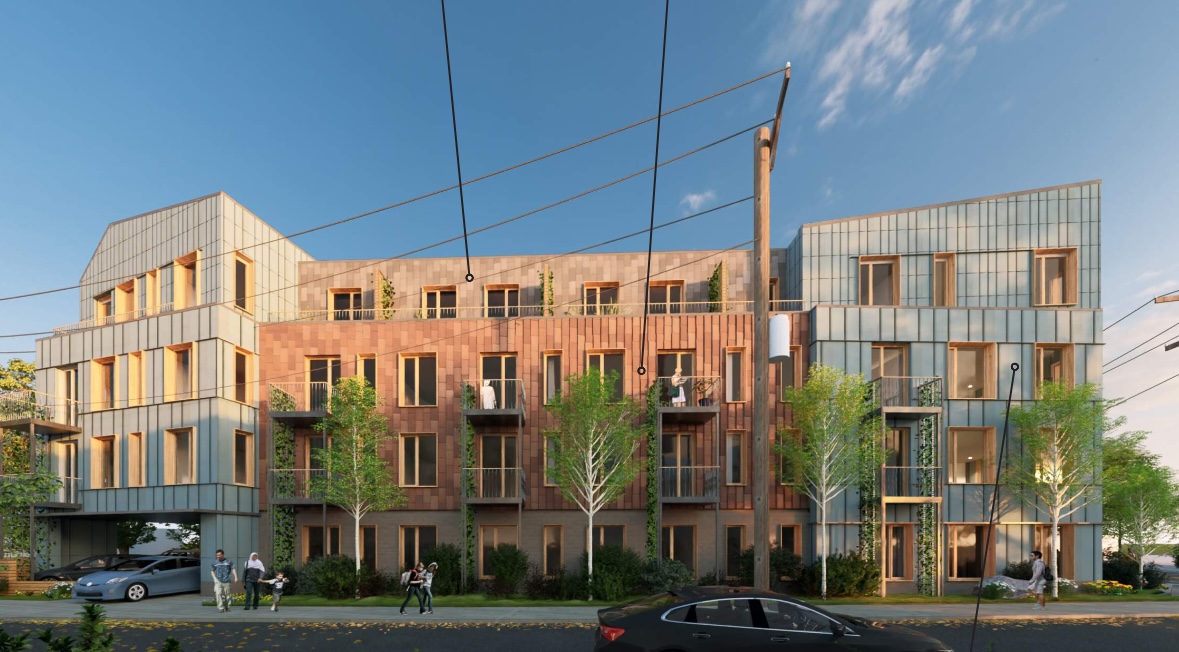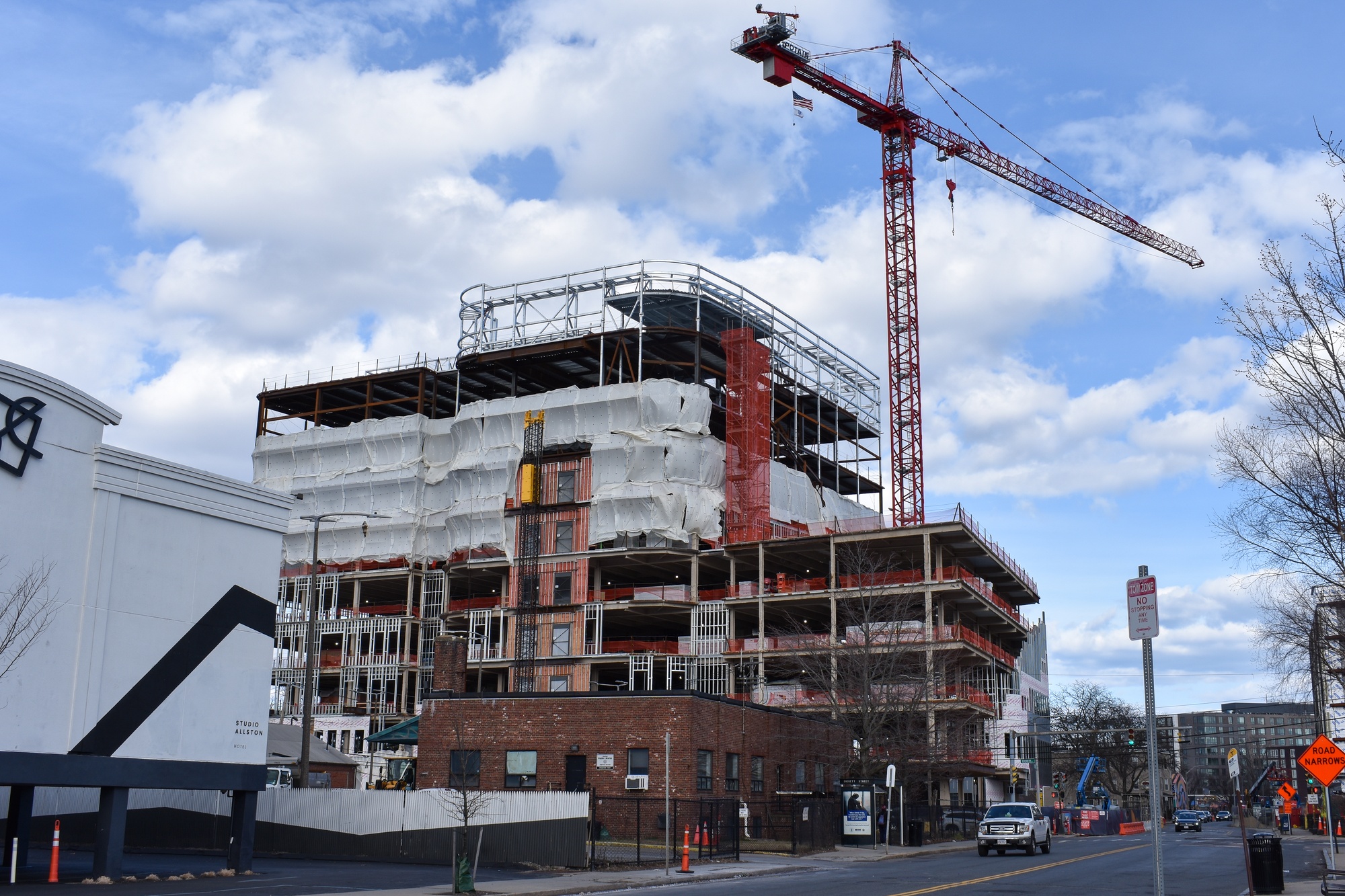Good, very good...approved to replace a vacant single-family home
You are using an out of date browser. It may not display this or other websites correctly.
You should upgrade or use an alternative browser.
You should upgrade or use an alternative browser.
Allston-Brighton Infill and Small Developments
- Thread starter kz1000ps
- Start date
stick n move
Superstar
- Joined
- Oct 14, 2009
- Messages
- 12,111
- Reaction score
- 18,975
-Approved








https://bpda.app.box.com/s/mldr7vuv8fq176jytz9ovh4wu02fuexo
“The proposed project would raze the existing distressed single-family dwelling and preserve, repurpose, and expand the existing structure of the Hill Memorial Baptist Church into a four (4) story building with 49 units of income-restricted senior housing units and a new connected structure with program space for the residents of the new development (the “Proposed Project”). The basement of the former church building will provide a public space for continued and enhanced community use, and the overall development program will incorporate an extensive array of open spaces, with at-grade surface parking for 15 vehicles accessed from Easton Street.”
https://bpda.app.box.com/s/74wys4wtekwiciw5z72ve4ji6ep5361h
Existing site:



279-283 North Harvard Street







https://bpda.app.box.com/s/mldr7vuv8fq176jytz9ovh4wu02fuexo
“The proposed project would raze the existing distressed single-family dwelling and preserve, repurpose, and expand the existing structure of the Hill Memorial Baptist Church into a four (4) story building with 49 units of income-restricted senior housing units and a new connected structure with program space for the residents of the new development (the “Proposed Project”). The basement of the former church building will provide a public space for continued and enhanced community use, and the overall development program will incorporate an extensive array of open spaces, with at-grade surface parking for 15 vehicles accessed from Easton Street.”
https://bpda.app.box.com/s/74wys4wtekwiciw5z72ve4ji6ep5361h
Existing site:
palindrome
Senior Member
- Joined
- Jun 11, 2006
- Messages
- 2,281
- Reaction score
- 131
Love it
HenryAlan
Senior Member
- Joined
- Dec 15, 2009
- Messages
- 4,186
- Reaction score
- 4,455
Looks great. The only thing that bugs me about this is that they moved the façade further back from the street, meaning that it no longer is consistent with the existing street wall. Aside from that, build baby build!
stick n move
Superstar
- Joined
- Oct 14, 2009
- Messages
- 12,111
- Reaction score
- 18,975
Its ugly for sure but like anything in life there are tradeoffs to burying utilities. On one hand theyre better protected from the elements, but on the other hand theyre much harder to get to, cost many times more to repair, and are disruptive and time consuming to repair. The installation and ongoing maintenance are both exponentially more expensive for buried utilities. In many places that trade off is worth it, in others it may not be.
JeffDowntown
Senior Member
- Joined
- May 28, 2007
- Messages
- 4,795
- Reaction score
- 3,662
I don't believe the tradeoff in cost is what you are suggesting.Its ugly for sure but like anything in life there are tradeoffs to burying utilities. On one hand theyre better protected from the elements, but on the other hand theyre much harder to get to, cost many times more to repair, and are disruptive and time consuming to repair. The installation and ongoing maintenance are both exponentially more expensive for buried utilities. In many places that trade off is worth it, in others it may not be.
By protecting the utilities in underground conduits, repairs become much less frequent. The cost of an individual repair may be higher, but it is compensated by the reduce frequency of repair. In utility dense areas, where larger conduit that can accommodate repair personnel are used, the repairs may be equivalent in cost.
The reason it is not done more routinely is up-front cost. We are hard wired against lifecycle cost savings that cost more up front.
BeansTheCat
Active Member
- Joined
- Aug 14, 2024
- Messages
- 110
- Reaction score
- 330
I couldn't agree more. In urban areas, it is almost uniformly cheaper to bury utilities.I don't believe the tradeoff in cost is what you are suggesting.
By protecting the utilities in underground conduits, repairs become much less frequent. The cost of an individual repair may be higher, but it is compensated by the reduce frequency of repair. In utility dense areas, where larger conduit that can accommodate repair personnel are used, the repairs may be equivalent in cost.
The reason it is not done more routinely is up-front cost. We are hard wired against lifecycle cost savings that cost more up front.
However, I will note that it is typically most cost-effective to do this work when the entire street is being repaved, instead of block-by-block. While the developer is throwing in some sidewalk improvements, that's quite a bit short of the full-depth replacement you'd like to see when burying lines (unless I missed something in project docs). The utility consolidation is certainly a step in the right direction, but what you'd ideally like to see is every project on the street throw some money towards burying utilities and that money get spent the next time N. Harvard gets repaved. Or, the city could just fund it outright instead of relying on developer contributions.
stick n move
Superstar
- Joined
- Oct 14, 2009
- Messages
- 12,111
- Reaction score
- 18,975
I don't believe the tradeoff in cost is what you are suggesting.
By protecting the utilities in underground conduits, repairs become much less frequent. The cost of an individual repair may be higher, but it is compensated by the reduce frequency of repair. In utility dense areas, where larger conduit that can accommodate repair personnel are used, the repairs may be equivalent in cost.
The reason it is not done more routinely is up-front cost. We are hard wired against lifecycle cost savings that cost more up front.
Let me clarify, because it was received the wrong way, which is my fault. When I said “The installation and ongoing maintenance are both exponentially more expensive for buried utilities” I wasnt saying the total cost of maintenance of buried utilities is more over its lifecycle compared to overhead lines, I was saying that the ongoing maintenance on underground utilities (when it is done) vs overhead utilities is exponentially more expensive. That is one of the tradeoffs, its better protected underground, so it needs less maintenance, but when it does the cost is exponentially more (reportedly 4-14x more). Overhead lines are extremely easy and very cheap to repair, but the tradeoff is that they are much more susceptible to storm damage.
#bancars
Senior Member
- Joined
- Jun 1, 2019
- Messages
- 1,659
- Reaction score
- 6,701

Harvard Files 10-Year Master Plan for Allston, Kicking Off Next Phase of Negotiations | News | The Harvard Crimson
Harvard filed its 2025-2035 Institutional Master Plan for its Allston campus on Tuesday, officially marking the next phase of negotiations with Boston officials over the University’s planned decade of development.
Beantropolis
New member
- Joined
- Jun 6, 2021
- Messages
- 65
- Reaction score
- 136
Then give them a few more and ask them to make it not look so shitty.I don't understand Boston. Give the developer X-extra unit and ask them to bury the utilities!
View attachment 58006
sean99090900
Active Member
- Joined
- Jan 18, 2024
- Messages
- 193
- Reaction score
- 875
1035 Commonwealth Ave

JeffDowntown
Senior Member
- Joined
- May 28, 2007
- Messages
- 4,795
- Reaction score
- 3,662
My understanding is repair costs really depends on the type of underground installation.Let me clarify, because it was received the wrong way, which is my fault. When I said “The installation and ongoing maintenance are both exponentially more expensive for buried utilities” I wasnt saying the total cost of maintenance of buried utilities is more over its lifecycle compared to overhead lines, I was saying that the ongoing maintenance on underground utilities (when it is done) vs overhead utilities is exponentially more expensive. That is one of the tradeoffs, its better protected underground, so it needs less maintenance, but when it does the cost is exponentially more (reportedly 4-14x more). Overhead lines are extremely easy and very cheap to repair, but the tradeoff is that they are much more susceptible to storm damage.
The large scale conduit installation common on large campuses and in some urban cores have walkable utility tunnels -- with multiple utilities clustered for relatively easy access. These are actually easier to repair than overhead installations. But lower cost buried (separate) small scale conduit is costly to diagnose and repair.
Something else to keep in mind with burying utilities is it may not be solely up to the city. Here in Nashville we have a Form-Based Code for the downtown with bonus height that outlines incentives for added height/density. They have been working through a revision to those bonuses that includes burying utilities, but the local utility provider (Nashville Electric Service) specifically said they wanted opt-out language included so they could have final say on burying utilities.
Now obviously Boston is very different from Nashville. For one, Nashville is on top of limestone ledge just below the surface in many places. My point is the utility company will have a lot to say about if the utilities can and should go below grade. As we learned from the Big Dig, there is a tangle of crap below the streets of Boston, and maybe the utility company just doesn't want to do it in certain areas. I agree that burying utilities should be approached from a very holistic approach. Going block-by-block with burying utilities may be more expensive in the long run due to the requirements of vertical movement on power and utilities.
Does anyone know if there is a long-range plan/Capital Improvements line item for relocating utilities below grade? I would presume it would be tied to larger repaving projects, stormwater projects, etc that allow for the utility relocation to piggy back on another project instead of having a separate project just for it.
Now obviously Boston is very different from Nashville. For one, Nashville is on top of limestone ledge just below the surface in many places. My point is the utility company will have a lot to say about if the utilities can and should go below grade. As we learned from the Big Dig, there is a tangle of crap below the streets of Boston, and maybe the utility company just doesn't want to do it in certain areas. I agree that burying utilities should be approached from a very holistic approach. Going block-by-block with burying utilities may be more expensive in the long run due to the requirements of vertical movement on power and utilities.
Does anyone know if there is a long-range plan/Capital Improvements line item for relocating utilities below grade? I would presume it would be tied to larger repaving projects, stormwater projects, etc that allow for the utility relocation to piggy back on another project instead of having a separate project just for it.
The TN area is also fairly unique in that you guys, by and large, are served by a municipal or cooperative electric utility - the vast vast majority of your power comes from the TVA, which is federally owned and operated. You guys have some of the best utility rates in the country. There's some spillover into neighboring states, but Nashville Electric Service, Memphis Light etc are all governed ultimately by city government. NES's board is appointed by the mayor, which in your case I suspect is advocating for its position from a place of "this is the thing we're responsible for, we want a say in if it's a good idea." In TN, the rate of folks served by "publicly owned" utilities is nearly 100%. Nationally, it's 28%, vs 66% by "investor owned" private utility companies. That said, several other notable cities/areas have municipal power companies - LA DWP, Phoenix's Salt River Project, and the Long Island Power Authority are the largest.Something else to keep in mind with burying utilities is it may not be solely up to the city. Here in Nashville we have a Form-Based Code for the downtown with bonus height that outlines incentives for added height/density. They have been working through a revision to those bonuses that includes burying utilities, but the local utility provider (Nashville Electric Service) specifically said they wanted opt-out language included so they could have final say on burying utilities.
Now obviously Boston is very different from Nashville. For one, Nashville is on top of limestone ledge just below the surface in many places. My point is the utility company will have a lot to say about if the utilities can and should go below grade. As we learned from the Big Dig, there is a tangle of crap below the streets of Boston, and maybe the utility company just doesn't want to do it in certain areas. I agree that burying utilities should be approached from a very holistic approach. Going block-by-block with burying utilities may be more expensive in the long run due to the requirements of vertical movement on power and utilities.
Does anyone know if there is a long-range plan/Capital Improvements line item for relocating utilities below grade? I would presume it would be tied to larger repaving projects, stormwater projects, etc that allow for the utility relocation to piggy back on another project instead of having a separate project just for it.
Those public utilities generally have both lower rates, and are far more responsive to the needs of their local communities. They're just more reliable - the average outage duration is something like 3 hours shorter if you're served by a municipality than an "investor owned" utility, and that's the catch. Something like utility pole relocation because they're blocking the new bike lane, or burying the power line does cost money. The thing is, someone like National Grid or Eversource which are ultimately responsible to their shareholders as S&P 500 components don't have a profit motive to relocate, much less bury utilities. They tend to have fewer crews and resources generally, so as to minimize costs, while returning profits to their shareholders. For example, nationally in 2023 Eversource had net earnings of ~2.4B on ~12B in revenue - that's roughly a 20% margin.
The incentives are just different. That profit motive isn't there for a municipal utility whose shareholder is the city - they don't have to produce a return, so they tend to have the lowest rates and highest consumer satisfaction, and the longest payback cycle. Governments don't care about quarterly returns, so they may as well spend money on burying utilities for the long run benefits.
Nashville can have a coordinated plan with stormwater, a published capital plan etc because for all intents and purposes, NES only does Nashville - and likely works hand in hand with the water service. In Boston's case, I don't know if a developer or the city can even force Eversource to bury the utilities, even if you paid them, since they may not even own them - a substantial number of poles are owned by the legacy phone carriers like Verizon or Comcast, which would then imply a level of coordination in capital spending that is unlikely. Not to say that MA doesn't have municipal utilities - 42 towns do - but not our bigger cities.
Tldr, municipal "publicly owned" utilities measure success by consumer satisfaction and reliability. "Investor owned" utilities measure success by cost controls and financial results.
Last edited:
We for sure have lower rates. I talk with my family all the time because everything is electric in my house and it is still cheaper than MA electric bills (something I am preparing for as I will be moving back to the area in March 2025). NES is unfortunately very stubborn in investing in the long term though. They have doubled down on large, galvanized utility poles rather than investing in burying utilities. Even when the city government pushes for burying utilities. While I haven't had long power outages (2-days was the longest after the 2020 Tornado passed 1/2 mile from my house), they have definitely struggled in recent years with climate change and not investing in upgraded facilities. They actually had a substation explode on them due to the cold weather last winter.
All that comes back to the point the both of us made. The utility companies have more say on burying the utilities. Tactics for (or against) burying utilities will vary from locale to locale, but utility location is an interesting example of just how complex real estate development can be.
All that comes back to the point the both of us made. The utility companies have more say on burying the utilities. Tactics for (or against) burying utilities will vary from locale to locale, but utility location is an interesting example of just how complex real estate development can be.
stick n move
Superstar
- Joined
- Oct 14, 2009
- Messages
- 12,111
- Reaction score
- 18,975
This has changed slightly (for the better) and hadnt been posted.
Used apple intelligence clean up tool to pull the above image and remove the borders and junk around it. Very cool.

Previous:

Replacing this structure.

Used apple intelligence clean up tool to pull the above image and remove the borders and junk around it. Very cool.
Previous:
Replacing this structure.
Last edited:
Interesting tool indeed. And agree, the new is way better than the old. I drove by this the other day and was trying to remember what this mini mart used to be, but now looking at it, I think it was a blockbuster video. Is that right? I have memories of parking behind this building in high school, both to go into whatever was here, as well as it being a spot we knew we could leave a car for a few hours and not get towed.This has changed slightly (for the better) and hadnt been posted.
Used apple intelligence clean up tool to pull the above image and remove the borders and junk around it. Very cool.
View attachment 58786
Previous:
View attachment 58784
Replacing this structure.
View attachment 58785
Edit -- just checked street view and sure enough, the very earliest street view from 2009 shows a defunct blockbuster for lease. It does not, however, go back far enough to show the old Roggi's... they changed the outside of the place a long time ago now, I cant really remember what was changed but they might have shed an old school neon sign or something similar.
Justbuildit
Active Member
- Joined
- Nov 27, 2022
- Messages
- 861
- Reaction score
- 2,960
249 Corey Rd in particular looks great. $1,100/sf for a 1 bed seems ambitious though...
















